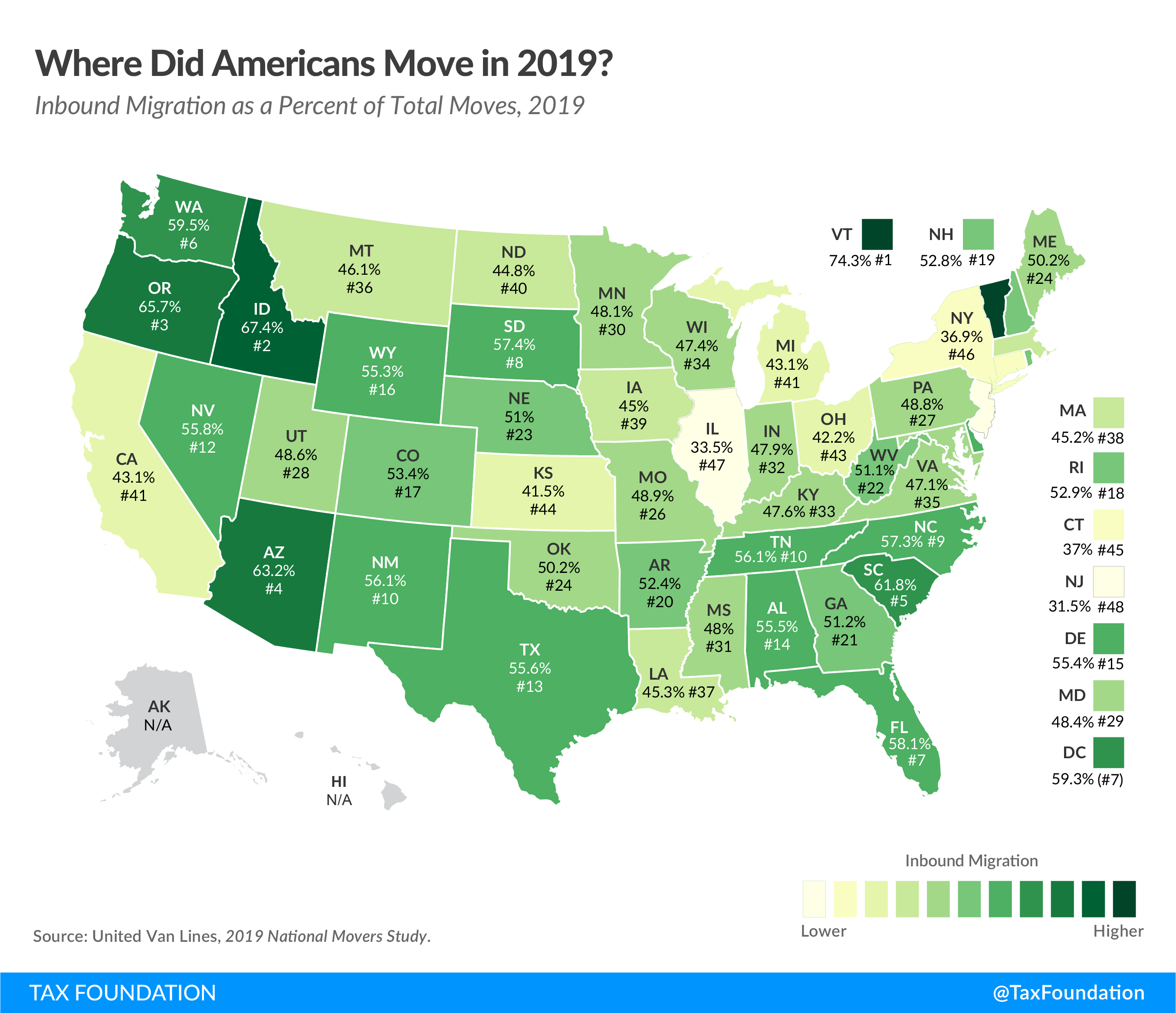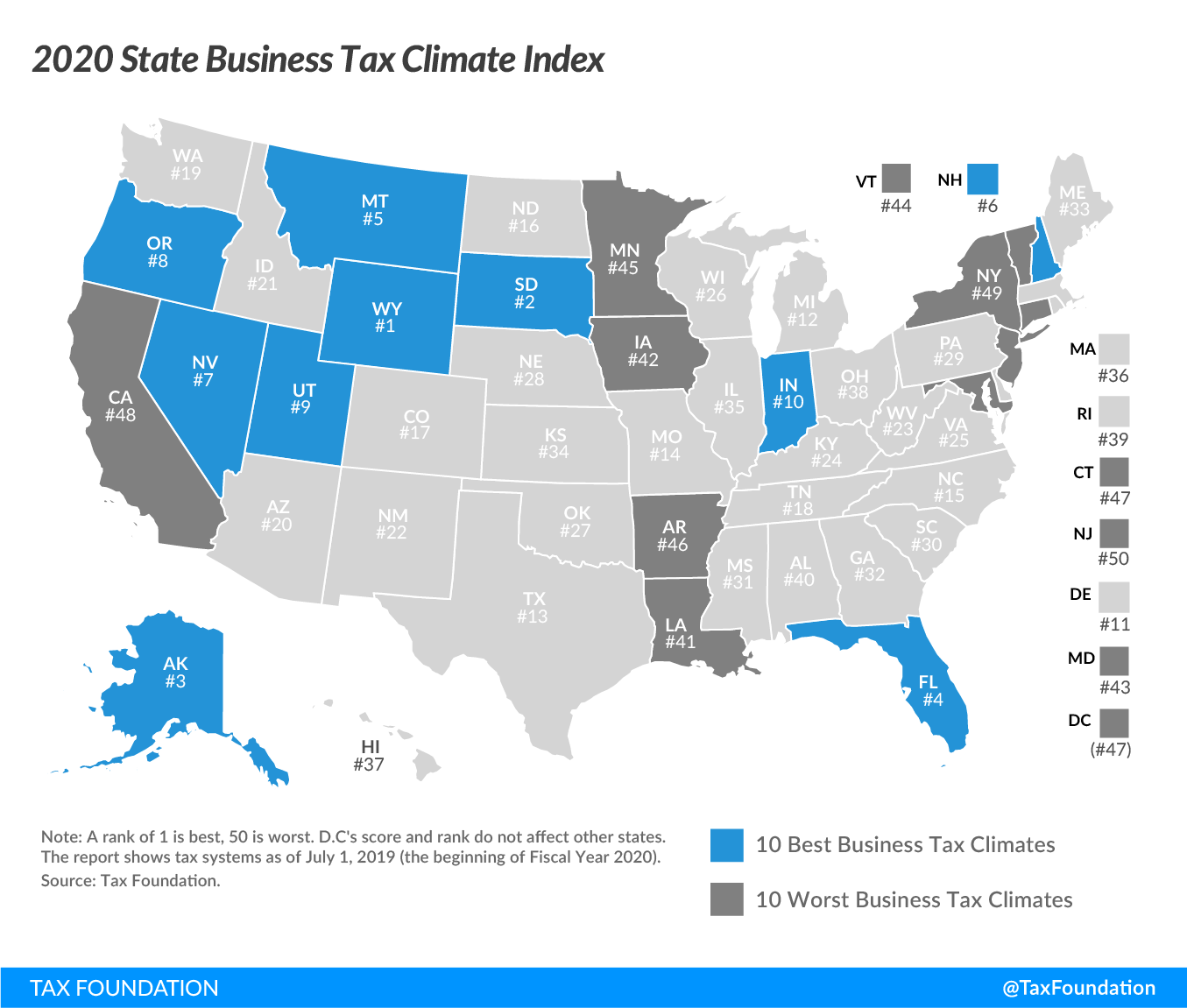States compete with each other in a variety of ways, including attracting (and retaining) residents. Sustained periods of inbound migration lead to greater economic output and growth. Prolonged periods of net outbound migration, however, can strain state coffers, contributing to revenue volatility as economic activity and tax revenue follow individuals out of state.
United Van Lines, the largest moving company in the United States, keeps track of its clients’ migration among the 48 contiguous states. It publishes that data each January, comparing the number of inbound moves to outbound moves for each state. As those who use United Van Lines are individuals and companies who use large moving trucks, this data is only a subset of all moves, but the National Movers Study still provides a targeted look at the types of interstate migration patterns we can expect to see in government-issued data once it becomes available.
The 2019 National Movers Study shows Vermont, Idaho, Oregon, Arizona, and South Carolina as the states with the highest proportion of inbound moves. Meanwhile, New Jersey, Illinois, New York, Connecticut, and Kansas saw the highest proportion of outbound migration. Inbound and outbound moves were nearly balanced in Maine, Oklahoma, and Nebraska.
For many individuals, job opportunities, family considerations, and lifestyle preferences are among the primary factors driving a decision to move out of state, but taxA tax is a mandatory payment or charge collected by local, state, and national governments from individuals or businesses to cover the costs of general government services, goods, and activities. considerations can certainly play a role. This is perhaps most visible in smaller states and states with metropolitan centers located near state borders. For example, tens of thousands of individuals work in greater Chicago but live in Indiana, where many interstate commutes are attributable, at least in part, to stark differences in tax landscapes. While it is difficult to measure the extent to which tax considerations factor into individuals’ moving decisions, there is no doubt that taxes are important in many individuals’ personal financial deliberations.
Our State Business Tax Climate Index uses over 100 variables to evaluate states on the competitiveness of their tax rates and structures. Four of the 10 worst-performing states on this year’s Index are also among the 10 states with the most outbound migration in this year’s National Movers Study (New Jersey, New York, Connecticut, and California).
While certain factors are outside a state’s control (sunny Florida may always have a certain competitive advantage in attracting retirees, for example), every state can foster an attractive economic landscape through wise tax policy decisions.
For more information on how your state measures up in terms of tax competitiveness, check out our interactive map or read the full State Business Tax Climate Index here.
Share this article
